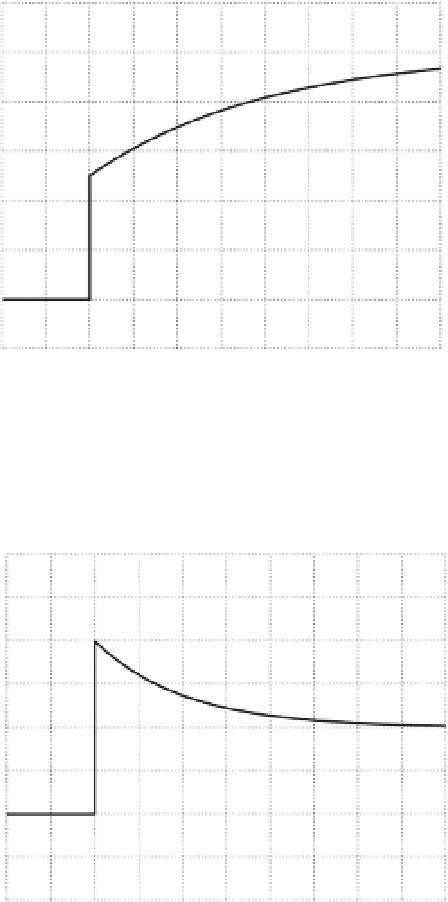Biomedical Engineering Reference
In-Depth Information
6
5
4
3
2
1
0
−
1
0
0.5
1
1.5
2
2.5
3
3.5
4
4.5
5
Time t [s]
FIGURE 4.26
Creep of the Kelvin three-element viscoelastic model. This model's equations of motion are left to
the reader to derive. After a step change in force, this model has an initial immediate increase in displacement, with
a subsequent slow creep to a steady-state level.
15
12.5
10
7.5
5
2.5
0
−
2.5
−
5
0
0.5
1
1.5
2
2.5
3
3.5
4
4.5
5
Time t [s]
FIGURE 4.27
Stress relaxation of the Kelvin viscoelastic model. This model has an initial immediate increase in
force followed by slower stress relaxation to a steady-state force level.
4.5.3 Muscle Mechanics
Chapter 3 introduced muscle as an active, excitable tissue that generates force by forming
cross-bridge bonds between the interdigitating actin and myosin myofilaments. The quanti-
tative description of muscle contraction has evolved into two separate foci: lumped descrip-
tions based on A. V. Hill's contractile element and cross-bridge models based on A. F.
Huxley's description of a single sarcomere [22]. The earliest quantitative descriptions of
muscle are lumped whole muscle models, with the simplest mechanical description being a















































































